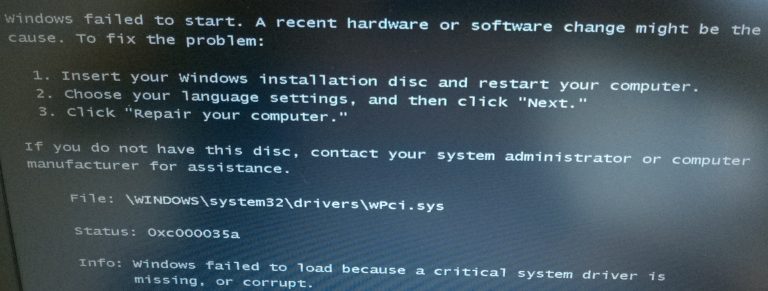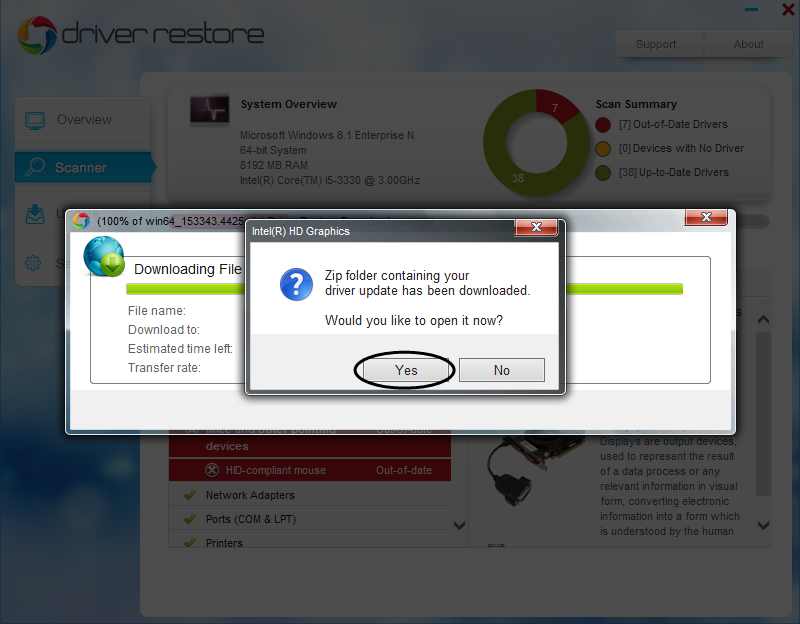

- #Kernel mode driver framework 1.11 kb2685811 how to#
- #Kernel mode driver framework 1.11 kb2685811 drivers#
- #Kernel mode driver framework 1.11 kb2685811 update#
- #Kernel mode driver framework 1.11 kb2685811 code#
Ok, so you’ve downloaded the necessary files, placed them into a folder labeled “Windows 7 KMDF 1.11” or something like that. Next we need to extract the CAB file out of the. MSU since that is what DISM will use later on. Your folder should now look something like this: I prefer to use a tool like 7zip to do this.
#Kernel mode driver framework 1.11 kb2685811 how to#
Now I’m not going to go into details here, I assume that you already know how to create an SCCM package so copy your files, create your package (no program needed) and distribute the content to your DP(s). #DOWNLOAD KERNEL MODE DRIVER FRAMEWORK 1.11 HOW TO#
#Kernel mode driver framework 1.11 kb2685811 update#
Setting up your Task Sequence to inject the update offline. #DOWNLOAD KERNEL MODE DRIVER FRAMEWORK 1.11 UPDATE# The first thing you’ll want to do is check your Format and Partition step.

Specifically, we are looking for (or need to set) a variable used to store the “real” drive letter for our OS partition. As you can see from the below screenshot, I’m using “ OSDisk” as the Task Sequence variable. Next we need a new Run Command Line Step to create a Scratch directory used by DISM. I create this because I actually inject quite a few items offline (depending on the scenario) and ensures that DISM has enough space to work with. #DOWNLOAD KERNEL MODE DRIVER FRAMEWORK 1.11 OFFLINE# This step goes anywhere AFTER the OS WIM is dropped onto the system but BEFORE the Setup Windows and ConfigMgr step runs. I have mine after the Apply Windows Settings step.Īfter the Scratch directory has been created (this gets removed as part of a Post-OSD cleanup script) we add yet another Run Command Line Step to actually inject the update. Here we are using DISM.EXE to inject the. Pay special attention to where %OSDisk% is referenced. You may need to change this to whatever variable you are referencing in your Format and Partition Step. If you are having trouble reading that command, here it is (watch for word wrap!):Ĭmd.exe /c X:\windows\system32\dism.exe /ScratchDir:%OSDisk%\Scratch /Image:%OSDisk%\ /Add-Package /PackagePath:%_SMSTSMDataPath%\Packages\EB20019E\Windows6.1-KB2685811-圆4.cabĪnd there you have it.
#Kernel mode driver framework 1.11 kb2685811 drivers#
#DOWNLOAD KERNEL MODE DRIVER FRAMEWORK 1.11 DRIVERS#Īs Windows 7 first boots into the OS and begins to process the drivers you injected, it will be working with the updated framework and your system (and deployment tech) should be happy.Ĭmd.exe /c X:\windows\system32\dism.exe /ScratchDir:%OSPART%\Scratch /Image:%OSPART%\ /Add-Package /PackagePath:%_SMSTSMDataPath%\Packages\PR100152\Windows6.1-KB2685811-圆4.cab Once these steps apply your driver framework should be updated. Where OSPART is my task sequence variable in Format and Partition Disk. The DISM log file can be found at X:\WINDOWS\Logs\DISM\dism.log InstallSoftware 4:08:57 PMđ628 (0x065C)Ĭommand line returned 2 InstallSoftware 4:08:57 PMđ628 (0x065C)Įntering ReleaseSource() for C:\_SMSTaskSequence\Packages\PR100152 InstallSoftware 4:08:57 PMđ628 (0x065C) Make sure that the image path and the Windows directory for the image exist and you have Read permissions on the folder.
#Kernel mode driver framework 1.11 kb2685811 code#
Process completed with exit code 2 TSManager 4:08:57 PMđ640 (0x0668) Released the resolved source C:\_SMSTaskSequence\Packages\PR100152 InstallSoftware 4:08:57 PMđ628 (0x065C) Reference count 1 for the source C:\_SMSTaskSequence\Packages\PR100152 before releasing InstallSoftware 4:08:57 PMđ628 (0x065C)ĭelete source directory C:\_SMSTaskSequence\Packages\PR100152 InstallSoftware 4:08:57 PMđ628 (0x065C) #DOWNLOAD KERNEL MODE DRIVER FRAMEWORK 1.11 CODE#

#DOWNLOAD KERNEL MODE DRIVER FRAMEWORK 1.11 DRIVERS#.#DOWNLOAD KERNEL MODE DRIVER FRAMEWORK 1.11 HOW TO#.


 0 kommentar(er)
0 kommentar(er)
